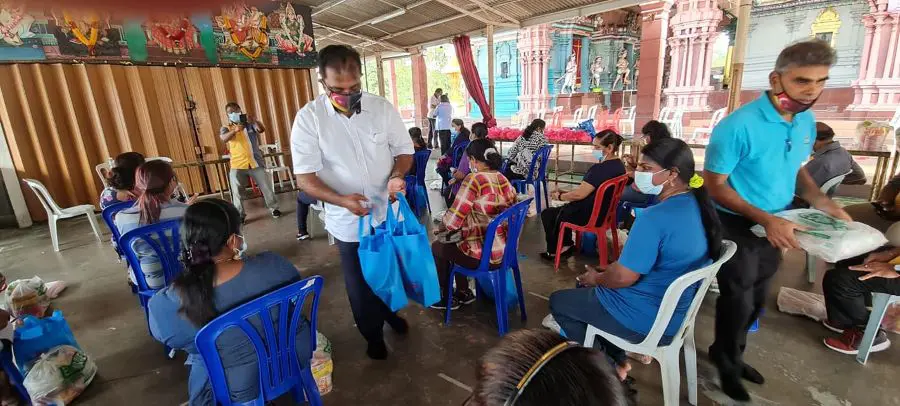By Ida Nadirah Ibrahim
SENTOSA isn’t an easy place to govern. With a high crime rate and only a handful of police personnel stationed in the community of 56,000 voters, and coupled with floods and rubbish-dumping issues, its residents have had much to endure.
State assemblyman G Gunaraj, however, isn’t about to give up on his constituency. Together with his team of committed individuals, Gunaraj is setting out to bring about change, one small plot of land at a time.
Selangor Journal (SJ): Can you share with us, what is the main industry in your constituency?
G Gunaraj (GG): Sentosa is a mixed development that has many housing estates and some industrial areas consisting of factories, logistics companies and warehouses. We are located near the port but a large part of Sentosa is residential.
We are located between Pandamaran and Sungai Kandis and have some 56,000 voters. As far as I am concerned, this is not a large number but there are a lot of housing areas such as Taman Sentosa, Bukit Tinggi and Bandar Botanic, a high-end residential project in the constituency.
SJ: What are some of the main attractions in Sentosa?
GG: There are not many places of attraction here, unfortunately, but a lot of people go to the GM Klang Wholesale City as it houses various retail shops. Before the pandemic hit, a lot of tourists would come and visit the wholesale business complex but now we only see locals supporting the shops.
I visited the place recently and found that things are not doing so great there. Many traders are badly affected by the outbreak. Other than GM Klang, we have the Aeon Shopping Mall, but it is not as popular with outsiders.
SJ: What are the concerns raised by your constituents and how do you address them?
GG: Sentosa, I feel, has not been given the chance to prosper. Government agencies have not played their part in ensuring that this place thrives economically.
As I have mentioned, Sentosa is a mixed pocket development with low to middle-cost residences. Both the police and the local council need to help improve the standard of living here, such as making sure that contractors appointed to do a job here, like keeping the grass cut, actually deliver.
At the same time, a lot of the houses here have been converted into business premises, the walk-up flats are not well maintained under the joint management bodies … a lot of things need improvement.
When government agencies play their role, the people will be more socially responsible and collectively ensure that a place is well kept and clean.
For example, when I became the assemblyman, there was a police station in Taman Sentosa but it was not in operation.
Instead, the police had rented one of the shophouses, but we managed to move them back to the station sometime last year.
I also supported the renovation works carried out at the station.
We are always actively engaging with the police but in the whole of Sentosa, there are only two police beats and four officers on duty. They are not operating as a police station.
We need to ensure that there are proper police stations in every state constituency, and this is in my wishlist for Sentosa.
SJ: What would you say about some of your achievements so far?
GG: One of the things I contributed to, with the help of other agencies, is solving the rubbish dump issue in Jalan Kebun Nanas. The area had been a place where people dump their trash. Even when the local council tried to barricade the area and plant trees there, people would still find a way to throw their rubbish along the two-kilometre stretch at night.
I spoke with the Works Department (JKS) and we got the community involved and through the initiation of the programme, 30 participants were given one plot of land each to plant various greens. This managed to resolve the rubish-dumping issue.
The programme is alive till today and has helped so many people in the community to keep their mind off Covid-19. To date, we have provided 31 plots and 120 people are on the waiting list to get theirs.
Another programme I launched in March is the ‘Sihat Sejahtera Sentosa’ programme to keep the people healthy mentally and physically.
Exercise consultants were invited to sessions like Zumba and the Bukit Gasing Walk. This was before MCO 3.0 and some 420 individuals participated with us.
We also have flooding issues due to pockets of development and we have identified them and are working with the local authorities and relevant agencies to solve them.
People have been very disciplined since the Covid-19 pandemic happened, therefore I hope the state and local governments will take this opportunity to install more amenities like rubbish bins so that everyone will continue with the discipline.
SJ: Can you share with us your problem-solving methods as a people’s representative?
GG: My approach is that I prefer to go personally to the ground and meet with the people. I have formed good and close ties with the people. But I don’t do this on my own. I have a good team; it isn’t a one-man show. Aside from my staff, I have some 25 volunteers helping me out. I also have a group called Sejahtera Sentosa and we interact daily to ensure that all complaints are addressed accordingly. I make sure these are the people who truly want to serve the community.
This article first appeared in the Selangor Journal monthly June edition (e-paper), published on May 31, 2021.





